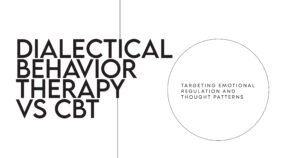Introduction: What Are Healthy Boundaries?
Have you ever felt drained after spending time with someone? Or maybe you’ve done things you didn’t want to, just to please others? If so, you might need healthier boundaries.
Healthy boundaries help protect your personal space, energy, and emotions. They allow you to have healthier relationships with family, friends, coworkers, and even yourself. Without good boundary setting, life can feel overwhelming.
Let’s explore types of boundaries and how to create them for a happier, more balanced life!

Nashville Mental Health
Why Are Healthy Boundaries Important?
Setting effective boundaries is key to improving mental health, emotional health, and physical health. Boundaries help:
✅ Protect your personal life and privacy
✅ Maintain comfort levels in romantic relationships
✅ Avoid toxic relationships and codependent relationships
✅ Reduce feelings of stress and anxiety
✅ Improve communication in real life
When you set clear relationship boundaries, you teach others how to treat you with respect.

Different Types of Boundaries
There are many types of boundaries. Some focus on physical space, while others protect your thoughts, feelings, and time. Let’s explore some key boundaries in relationships and daily life.
1. Physical Boundaries
These protect your personal space and body. For example:
- Not wanting hugs from strangers
- Needing quiet time or personal time
- Asking a friend to knock before entering your room
Not setting physical boundaries can lead to boundary crossing or feeling uncomfortable around others.
2. Emotional Boundaries
These help protect your feelings and mental health. Examples include:
- Saying “I need to process my emotions before talking”
- Not taking on other people’s problems as your own
- Expressing feelings without fear of judgment
Without emotional boundaries, people might blur boundaries and overstep your comfort zone.
3. Intellectual Boundaries
These involve your ideas and beliefs. You set intellectual boundaries when:
- You respect different opinions
- You avoid debates that make you uncomfortable
- You ask others to listen to your thoughts without judgment
4. Time Boundaries
Your time is valuable. Time boundaries help you balance daily life, work, and relationships. Examples include:
- Saying no to plans when you need adequate rest
- Setting blocks of rest time for self-care
- Protecting quality time with family
5. Sexual Boundaries
These define comfort levels in intimate relationships. Examples include:
- Communicating what you are comfortable with
- Saying no to things that make you uncomfortable
- Setting clear expectations with sexual partners
6. Financial Boundaries
Money can be a tough topic in relationships. Financial boundaries include:
- Deciding how much to spend on gifts
- Choosing whether to lend money to friends
- Setting a budget for personal life and fun
7. Workplace Boundaries
Professional boundaries protect your energy and workload. Examples include:
- Not answering work emails after hours
- Saying no to extra tasks when overwhelmed
- Taking breaks during busy times
Without workplace boundaries, you may struggle with a healthy work-life balance.
Signs of Poor Boundaries
When you have unhealthy boundaries, you might feel exhausted, stressed, or taken advantage of. Some signs of poor boundaries include:
❌ Saying yes when you want to say no
❌ Feeling guilty for setting limits
❌ Ignoring your needs to please others
❌ Letting others invade your personal space
If you recognize these signs, don’t worry! You can learn to set firmer boundaries for a healthier life.
Nashville Mental Health
How to Start Setting Boundaries
Building strong personal boundaries takes practice. Here are some practical, science-based exercises to help you get started:
1. Identify Your Limits
Think about situations that make you feel stressed or uncomfortable. These are areas where you need stronger boundaries.
2. Use Clear Communication
Be direct and respectful. For example:
- “I need quiet time after work before socializing.”
- “I’m not comfortable discussing my personal life at work.”
3. Practice Saying No
If you’re a people pleaser, saying no can be hard. Start small:
- “I can’t make it this time, but thanks for inviting me!”
- “I’d love to help, but I need to focus on my own work.”
4. Set Consequences
If someone keeps crossing your boundaries, let them know the result. Example:
- “If you continue yelling at me, I’ll leave the conversation.”
5. Prioritize Self-Care
Protecting your energy levels is important. Schedule time for:
✅ Adequate sleep and relaxation
✅ Boundary building exercises
✅ Activities that bring joy and peace
6. Seek Support
A mental health professional can help if you struggle with boundary setting. Therapy is great for healing from harmful relationships or abusive partners.
Boundaries in Different Relationships
🌟 Boundaries with Family Members
Family can be tricky! To set family boundaries, try:
- Limiting conversations about personal topics
- Asking for privacy when needed
- Saying no to unreasonable demands
💛 Boundaries in Friendships
Boundaries in friendships include respecting time, feelings, and personal space. A healthy friendship allows for balance in life, not constant guilt or pressure.
❤️ Boundaries with Romantic Partners
In romantic relationships, setting boundaries helps build positive relationships. Talk openly about:
- Comfort levels with affection
- Need for quality time and alone time
- Expectations around emotional boundaries
💼 Boundaries in Professional Life
Having workplace boundaries helps you avoid burnout. Be clear about your availability and work-life balance to protect your mental health.
Final Thoughts: Boundaries Lead to a Happier Life
Setting healthy boundaries is a key factor in reducing stress, improving relationships, and creating a non-anxious life. Whether with family, friends, or coworkers, clear personal boundaries allow for respect and balance.
If you struggle with boundaries, remember—it’s okay to say no. It’s okay to prioritize your well-being. Your needs matter!

Nashville Mental Health
Frequently Asked Questions (FAQs)
1. What are examples of healthy boundaries?
Healthy boundaries include saying no when needed, asking for personal space, setting time limits, and communicating feelings honestly.
2. How do I set boundaries without feeling guilty?
Remind yourself that boundaries protect your well-being. Practicing self-care and seeking support from a mental health professional can help.
3. What happens when you don’t set boundaries?
Not setting boundaries can lead to exhaustion, resentment, and toxic relationships. It may also harm your emotional health and mental health.
4. How do I set boundaries with family?
Start by communicating clearly. Let them know your limits, such as needing personal time or not discussing certain topics.
5. What if someone ignores my boundaries?
If someone disrespects your boundaries, calmly remind them. If they continue, set consequences or distance yourself from the situation. Visit SAMHSA or contact us today for more information.
By setting effective boundaries, you can enjoy healthier, balanced relationships and a happier life. Start today and take control of your well-being! 🚀





